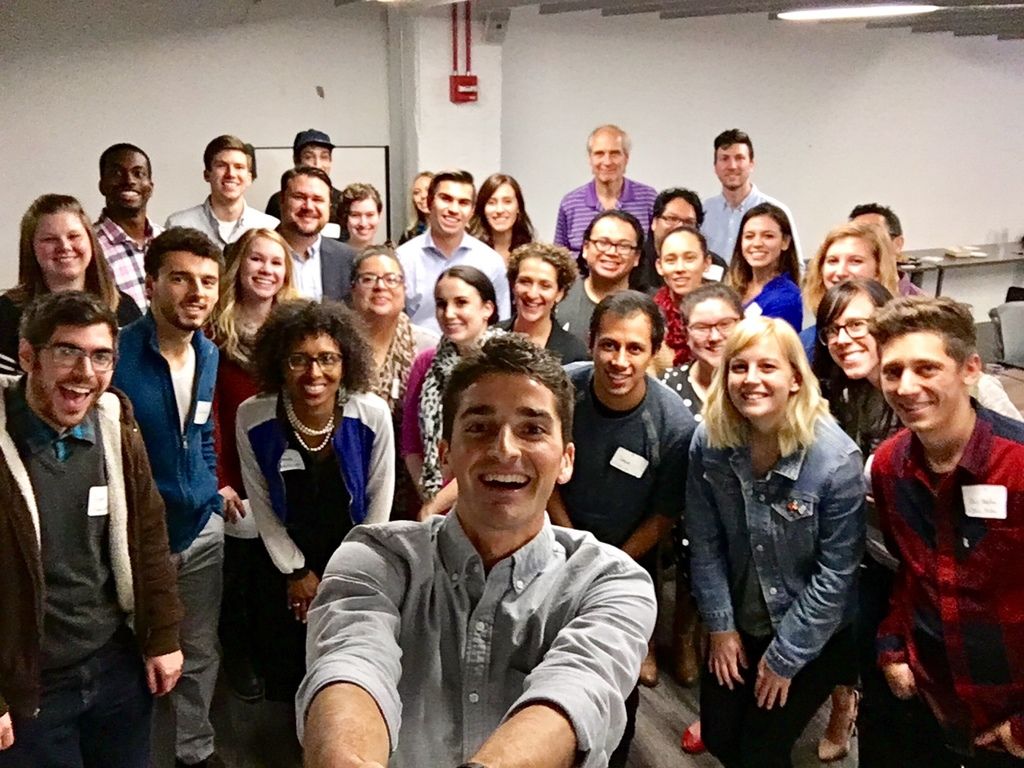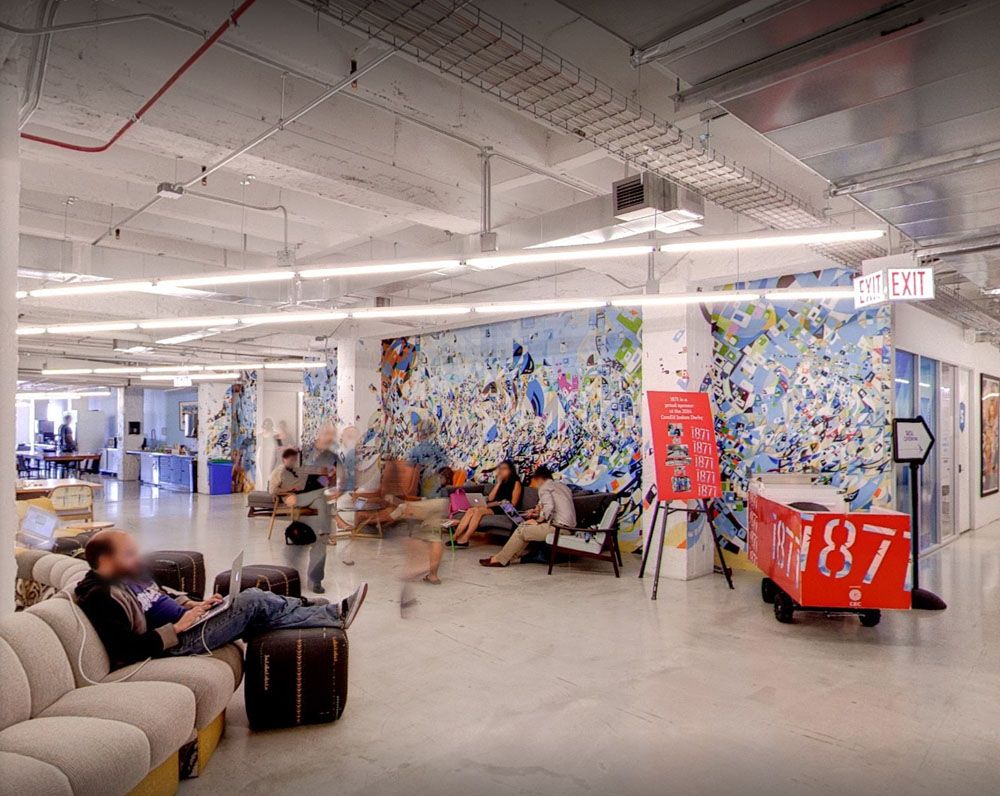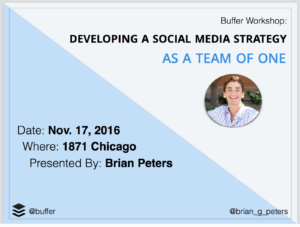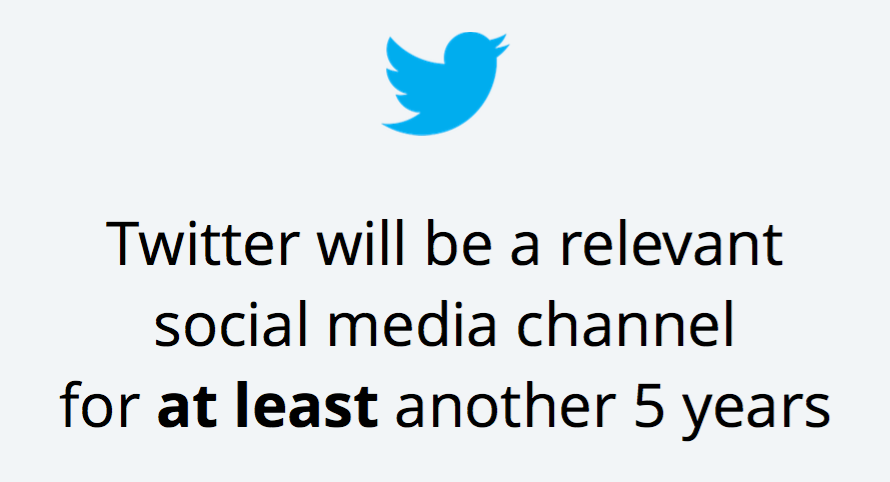Buffer signups
14,943 -15%
Buffer for Business trials
918 -30%
Social blog sessions
1,252,131 +2%
Email subscribers
93,232 -3%
NPS for Buffer for Business
44 +1.7%
What makes for a great community event?
We’ve been eager to explore that question for our Buffer events, brainstorming between intimate meetups and blowout conferences and everything in between. Last month, we ended up experimenting on the “in between” — a social media workshop, held in Chicago.
It was new in a lot of ways: our first IRL workshop, just a couple weeks to prepare, the first time we’d ever charged for an event!
And here’s the best news: We’d like to do it again.
Come along to see what all went into this workshop experience, what we learned about how to price an event, and what we plan to do next. Plus, I’ll share some more marketing happenings like our biggest campaign ever. Hope you enjoy! Feel free to AMA (ask me anything) in the comments.
How we created our first (paid) social media workshop

Earlier this fall, we ran a three-city events tour on the East Coast of the United States, stopping in New York, Boston, and Washington, D.C. We met a lot of cool people, had a lot of great chats, and learned a lot of helpful insights.
One of our key takeaways: Many people are craving advanced, strategic social media help.
How exciting!
We feel particularly lucky that social media strategy is a huge part of our day-to-day work on the Buffer marketing team, and it would be an absolute privilege to be able to share what we were learning with a bigger group (and I’m sure we’d learn from our invitees as well).
Arielle took on the task of organizing the event, and Brian offered to host. Here’s what they came up with:
- Developing a Social Media Strategy as a Team of One
- Thursday, Nov 17
- 6:00 – 8:30 pm
- Location: 1871 – Chicago’s Technology and Entrepreneurship Center

(Cool place, right? Brian has been nomading around the U.S. and Canada and was staying in Chicago during November. The event space is one of the coolest in town. I realized afterward that 1871 was the year of the Chicago fire; the folks at 1871 have a cool reason for choosing it.)
Then came one of the biggest decisions to make with this event: Should we charge for it?
There were a few discussion points on this:
- Is it Buffery? We’d never charged for an event before, and we love giving away knowledge for free.
- Charging for an event usually ensures a higher RSVP-to-attendance rate
- Admission can help offset the cost of an event (our main cost was renting the space)
- We felt we were providing some really high value here
We chose to charge: $15 per person, thinking we might get 30 or so people to attend.
We ended up with nearly 50 people and a waiting list of others who wished to join! We opened the doors to as many as would fit (and did some last-minute chair shuffling and worksheet printing).
Lesson #1: People really do crave in-person social media advice and strategy.
Lesson #2: They’re willing to pay for it.
The next piece we were keen to figure out was the content of the workshop. What did people really want to learn about? And in what format would be best?
In the past, we’ve tried a bunch of different tactics: fireside chats, forums, presentations, small groups. We’d covered general social media topics, workplace culture, and more.
For the Chicago workshop, we took a slightly different approach. Here was the agenda we used:
- 6:00 – 6:15 – Welcome / people arrive
- 6:15 – Introduction (Brian + Buffer) – Set intention and expectations for the evening
- 6:20 – Introduce initial icebreaker: break people up into pairs to fill out one-sheet together
- 6:25 – Icebreaker: Point Counterpoint
- 6:35 – Overview of state of social media and challenges as a team of one
- 6:40 – 7 steps (or more) to developing a social media strategy
- 7:15 – Group discussion, putting it into practice (20 min)
- 7:35 – Come back to full group, sharing interesting results and learnings (20 min)
- 7:55 – Example tweets – what’s possible on social (how big brands are doing it well, to inspire everyone!)
- 8:15 – Final activity with worksheet about their own brand strategy
- 8:30 – Wrap up, final words, BIG THANKS to everyone!
If you’re interested in the specifics of the presentation, Brian was nice to share his slides below.

The Point / Counterpoint game was a fun one: Given a social media topic, people choose to stand on one side of the room if they agree and the other side of the room if they disagree. Then the two sides took turns sharing thoughts on why they chose the way they did. Example topic:

(What would you choose for this one? Share your thoughts in the comments!)
Turns out, we found that a lot of the content and format worked really well for this type of event:
- The size was ideal (fewer than 50). Any more and it would have felt a bit impersonal.
- The icebreakers and interaction helped people stay actively engaged throughout
- The content — a bit more advanced and specific — seemed to really make an impact
Lesson #3: We want to do more of these!
All these different experiments — a new event type (workshop), charging for tickets, going deeper on social media topics — all seemed to pay off. After the workshop, we sent out a survey for followup questions, and we jumped into Twitter to see what people were saying. People are so great!
#bufferworkshop @buffer @Brian_G_Peters pic.twitter.com/x70JAV1f9F
— Lauren Blake (@_lblake) November 18, 2016
@ariellemargot thank you so much for the spot! @Brian_G_Peters the workshop was great! ?????? learned a lot! ? @1871Chicago
— anel lópez (@anel132) November 18, 2016
"Sometimes looking back at an old design is like looking back at an old boyfriend-what was I thinking?" @Brian_G_Peters @buffer #socialmedia
— Monique Wingard MSSA (@MoniqueWingard) November 18, 2016
^^ haha, I agree!
So … what will we do next?
It’s definitely something we’re talking about. How can we do another workshop and learn even more about what would be most helpful for social media marketers? How can we scale these? How can we clone Arielle and Brian?
Here’s hoping we’ll have some updates to share toward the end of the year with fun plans for the next Buffer workshop. Any ideas? Let me know in the comments!
November highlights from Buffer marketing
The State of Social Media 2016 Report — our biggest campaign yet
The Future of Social Media (And How to Prepare For It): The State of Social Media 2016 Report
How do you find out where social media is headed?
You ask.
And then you turn it into a huge blog post and marketing campaign.
We were eager to help social media marketers get a glimpse of the current social landscape: What are people thinking, feeling, trying, and testing in 2016? What are they looking ahead to in 2017? So we turned this curiosity into a campaign.
Ash led the project for us, coming up with a thorough survey that we promoted on social, email, and more, ending up with 1,252 responses. Then Ash analyzed the data, wrote the blog post, organized design, promotion, and so much more. The whole team got involved (which is something we’re excited to do more of in 2017, these team-wide campaigns). Here are the three biggest takeaways we found:
- Video is about to hit the peak! Now’s the time to get on. ?
- No one has left Facebook! Almost every marketer is using Facebook (93%) and Facebook ads (91%). ?
- Only 1 in 5 respondents use social media for customer support ?
It was also really neat to see how far this campaign spread. We were grateful to gain a lot of traction on social and email. Thanks to the work of Ash, Alfred, Brian, and others, we were also able to spread the State of Social Media results into a series of content pieces that were aided by some really awesome partners.
- Product Hunt joined us to share the 20 best new social media tools for 2017
- Inbound.org highlighted an original post of ours that appeared on their site
- Social Media Examiner offered to feature some takeaways on their blog (post coming soon)
At the moment, we are up to 83,000 page views on the content from this campaign, not to mention the awareness and influence that it earned on social and other channels. With such good results, we’d love to make this one an annual project to look forward to!
What can we share that would be helpful for you?
If you have any questions at all about our marketing plans or projects, I’d be so happy to chat with you here in the comments. Feel free to share any thoughts or questions, and I’ll jump right in!
Image sources: Tom Schmidt, Unsplash
Check out other reports from November:
Try Buffer for free
140,000+ small businesses like yours use Buffer to build their brand on social media every month
Get started nowRelated Articles

Note: This is the quarterly update sent to Buffer shareholders, with a bit of added information for context. We share these updates transparently as a part of our ‘default to transparency ’ value. See all of our revenue on our public revenue dashboard and see all of our reports and updates here . It's been quite the y

Editor’s Note: Thanks for checking out this post! We’ve released our updated 2021 pay analysis here. You can’t improve something if you don’t know that it needs to be improved. That was very true for us four years ago when we first started looking into equal pay at Buffer. We have long used a salary formula to determine all of our salaries – the same role in the same part of the world receives the same salary. That m

Ever since the world got turned upside down by COVID-19, it’s been “business as unusual” for everyone – Buffer included. I sent this update out to Buffer’s investors one week ago. I hesitated on whether to share it more widely, as I know a lot of companies have been impacted more severely in these times. That said, I believe it makes sense to lean into our company value of transparency, since there may be some companies this could help, and it shows Buffer customers that we will be around beyon

